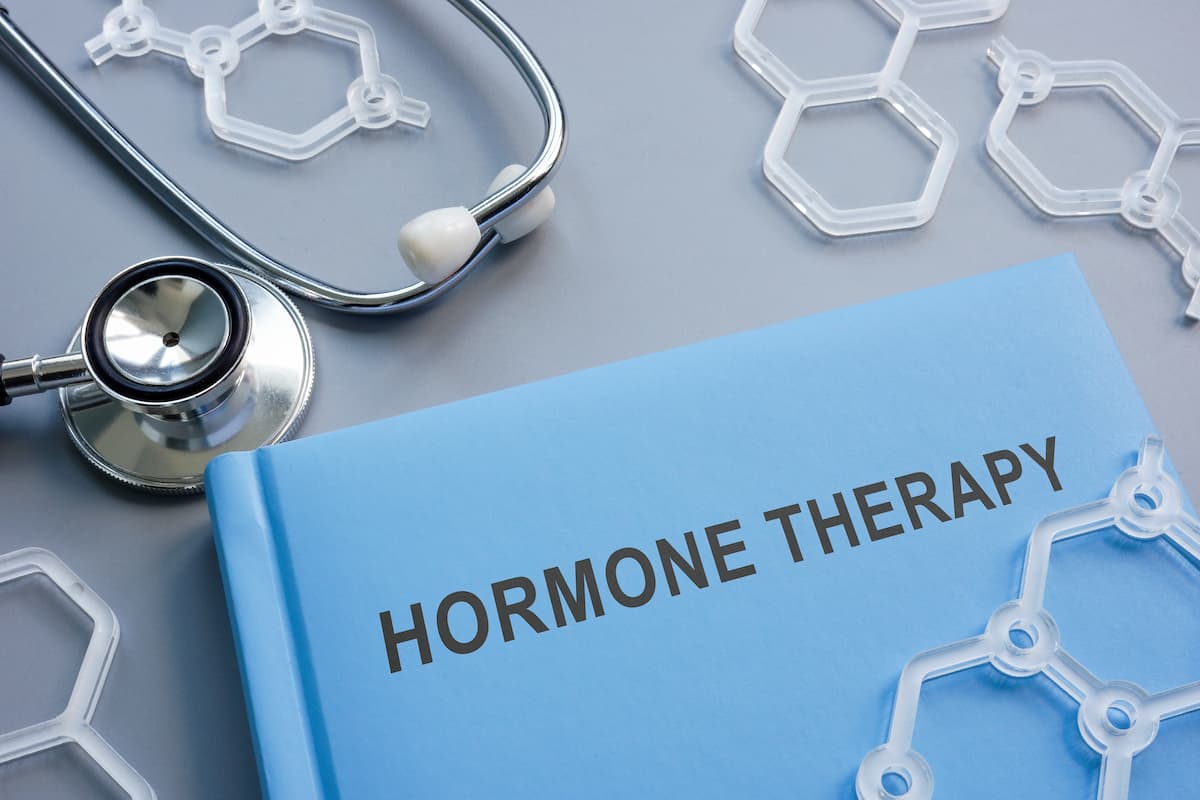- Clinical Technology
- Adult Immunization
- Hepatology
- Pediatric Immunization
- Screening
- Psychiatry
- Allergy
- Women's Health
- Cardiology
- Pediatrics
- Dermatology
- Endocrinology
- Pain Management
- Gastroenterology
- Infectious Disease
- Obesity Medicine
- Rheumatology
- Nephrology
- Neurology
- Pulmonology
Menopausal Hormone Therapy Use Declined in Past 2 Decades among Women Regardless of Age, Race/Ethnicity
Use of menopausal hormone therapy decreased from nearly 27% to 5% among postmenopausal women between 1999 and 2020, according to new research.
©Vitalii Vodolazskyi/AdobeStock

Over the past 2 decades, use of menopausal hormone therapy (MHT) has declined among US postmenopausal women of all age and racial and ethnic groups, according to new data published online September 27, 2024, in JAMA Health Forum.
Findings from a cross-sectional study of more than 13 000 postmenopausal women showed that between 1999 and 2020, the prevalence of MHT use decreased among women overall, going from 26.9% (95% CI 22.6%-31.7%) to 4.7% (95% CI 3.4%-6.5%).
The use of MHT decreased among all age groups, with the greatest declines observed among women aged 52 years to younger than 65 years. The use of MHT also declined over the 20-year study period in each racial and ethnic group, however, prevalence was lower among Hispanic and non-Hispanic Black women compared with non-Hispanic White women, according to the study results.
“MHT remains the most effective treatment for menopausal symptoms, and professional societies in North America recommend it primarily for managing vasomotor symptoms, genitourinary syndromes, and bone loss arising from menopause, though not for the prevention of coronary heart diseases or any other chronic conditions,” coauthors Lin Yang, PhD, of the Cumming School of Medicine at the University of Calgary in Canada, and Adetunji T. Toriola, MD, PhD, MPH, of the Washington University School of Medicine in St. Louis, Missouri, wrote in the study.
According to Yang and Toriola, less is known about the recent trends in, and prevalence of, use of MHT, particularly in the US.
“To our knowledge, the most recent study on MHT prevalence using a nationally representative sample was based on self-reported data up to 2010; hence, there are no recent MHT use data captured by prescriptions to understand contemporary patterns in the US,” researchers wrote. “The goal of this cross-sectional study is to comprehensively describe the most recent trends in, and current prevalence and correlates of, MHT use, taking into consideration MHT formulations, among postmenopausal women in the US.”
Yang and Toriola conducted the serial cross-sectional study using data from the nationally representative National Health and Nutrition Examination Survey (NHANES). A total of 13 048 noninstitutionalized postmenopausal women from 10 NHANES cycles (1999-2000 to 2017-March 2020) were included in the analysis. They examined data on prescription medications, menopausal status, sociodemographic characteristics (ie, age, race and ethnicity, income, education level), health insurance coverage, weight and height measures, and smoking status.
The prevalence of MHT use was extracted from the prescription medication data collected during NHANES household interviews and MHT formulations were determined by hormone type. Hormone type was classified into estrogen only, progestogen only, combined estrogen and progestogen, combined estrogen and testosterone, and combined estrogen, progestogen, and testosterone, according to the study.
Findings
Most (71.7%) of the participants were non-Hispanic White, had a family income-to-poverty ratio above 1.3 (1.3 to <3.5, 33.1%; ≥3.5, 40.5%), had more than a high school education (59.6%), were enrolled in private insurance (61.4%), had overweight (26.8%) or obesity (40.6%), and never smoked (59.8%), according to the results.
Age. Investigators found that MHT use declined across all groups, but the greatest decline was among postmenopausal women aged 52 years to younger than 65 years. Over the 20-year study period, MHT use decreased by 31.4% among participants aged 52 years to younger than 65 years, 23.5% among those aged less than 52 years, and 10.6% among those aged 65 years and older.
Race and ethnicity. The prevalence of MHT use decreased over the 2 decades in each racial and ethnic group:
- Hispanic: 13.8% (1999-2000) to 2.6% (2017-2020)
- Non-Hispanic Black: 11.9% to 0.5%
- Non-Hispanic White: 31.4% to 5.8%
- Other racial/ethnic groups: 13.5% to 2.8%
Researchers also noted that non-Hispanic Black women had the lowest prevalence of MHT use in 1999-2000 and 2017-2020 and experienced the greatest relative decline (prevalence ratio [PR] 0.04, 95% CI 0.02-1.00). The prevalence of MHT use was highest for non-Hispanic White women over the 20-year study period compared to women of other racial and ethnic groups, however, the relative declines in prevalence were similar between Hispanic women (PR 0.19, 95% CI 0.09-0.41), non-Hispanic White women (PR 0.18, 95% CI 0.12-0.27), and women of other racial or ethnic groups (PR 0.21, 95% CI 0.04-1.09).
MHT formulations. With the exception of the 2015-2016 NHANES cycle where it accounted for 38.2%, estrogen-only formulations accounted for more than 50% of MHT use at every study cycle, being as high as 78% in 2007 to 2008, Yang and Toriola stated.
“The prevalence of MHT use varied by family income-to-poverty ratio, health insurance coverage in all racial and ethnic groups, weight, and smoking status among non-Hispanic White women, as well as by education attainment among non-Hispanic Black and Hispanic women,” investigators noted.
Limitations to the current study include the fact that the route of administration for MHT was not recorded in NHANES and the reasons for using MHT were not fully documented.
“Discussions and policy on MHT use need to take into consideration sociodemographic factors such as age, race and ethnicity, income, and education,” Yang and Toriola concluded.
Reference: Yang L, Toriola AT. Menopausal hormone therapy use among postmenopausal women. JAMA Health Forum. Published online September 27, 2024. doi:10.1001/jamahealthforum.2024.3128
